Accepted Scientific Name: Mammillaria halbingeri Boed.
Kakteenkunde 1933: 9 1933
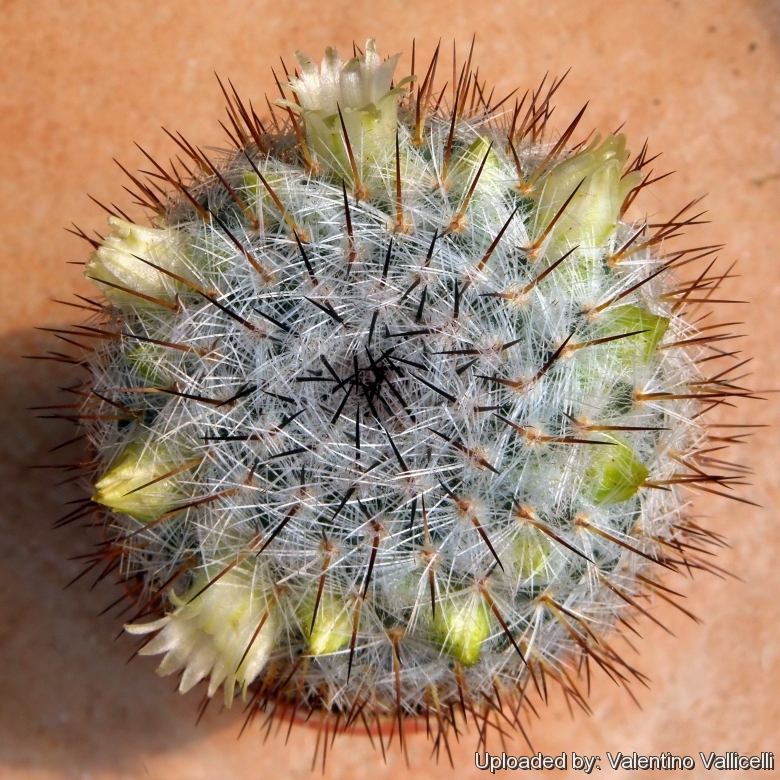
Neomammillaria halbingeri (Mammillaria halbingeri) Photo by: Valentino Vallicelli
Origin and Habitat: Mammillaria halbingeriSN|20848]]SN|20848]] is uncommon from around Ocotepec to the Tlaxiaco junction of highway 190, and further into the Sierra Mixteca, southwest portion of the state of Oaxaca (Mexico, Northern America)
Altitude: 2000 to 2500 metres above sea level.
Habitat: The species occurs in tropical oak and pine forest, meadows and wooded valleys, often in humus and moss.
Synonyms:
Description: Mammillaria halbingeriSN|15150]]SN|20848]] is a densely spined cactus with small sulphur yellow flowers in a ring around the sides of the stem. Its body is densely covered by crowded tubercles bearing short spines and abundant wool in their axils. This is a controversial species related (and possibly conspecific) with Mammillaria albilanataSN|20848]]SN|15150]]. It is a very poorly known taxon which may not be a good species.
Habit: Simple at first, later branching basally and from the sides to form clumps.
Stems: Globose to elongate, glossy, light green, to 10 cm high and 8 cm in diameter.
Tubercles: Ovate to conical, crowded, not lactiferous, axils with wool. Tubercule arrangement 13 and 21.
Central spines: Usually 2, occasionally 1, slightly curved, needle-like, glassy white to yellowish white, with brown tips, to 9 mm long.
Radial spines: 21-28, thin, needle-like, glassy white, 5-8 mm long.
Flowers: Funnelform, in a ring around the sides of the stem, typically sulphur yellow with pale pink margins, but also – and more commonly - pink or magenta to 12 mm in diameter.
Fruits: Small, whitish.
Seeds: Brown.
Bibliography: Major references and further lectures
1) David Hunt, Nigel Taylor “The New Cactus Lexicon” DH Books, 2006
2) John Pilbeam (1999) “Mammillaria The Cactus File Handbook” Nuffield Press.
3) Edward F. Anderson “The Cactus Family” Timber Press, 2001
4) James Cullen, Sabina G. Knees, H. Suzanne Cubey “The European Garden Flora Flowering Plants: A Manual for the Identification of Plants Cultivated in Europe, Both Out-of-Doors and Under Glass”Cambridge University Press, 11/ago/2011
5) Arias, S. 2013. Mammillaria halbingeri. In: IUCN 2013. "IUCN Red List of Threatened Species". Version 2013.2. <www.iucnredlist.org>. Downloaded on 27 November 2013.
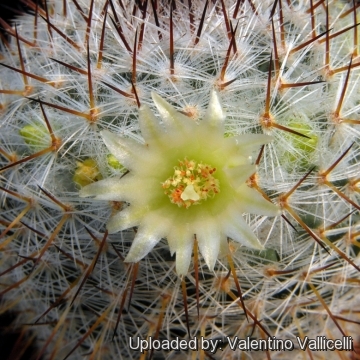 Neomammillaria halbingeri (Mammillaria halbingeri) Photo by: Valentino Vallicelli
Neomammillaria halbingeri (Mammillaria halbingeri) Photo by: Valentino Vallicelli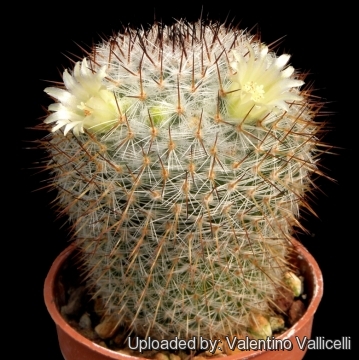 Neomammillaria halbingeri (Mammillaria halbingeri) Photo by: Valentino Vallicelli
Neomammillaria halbingeri (Mammillaria halbingeri) Photo by: Valentino Vallicelli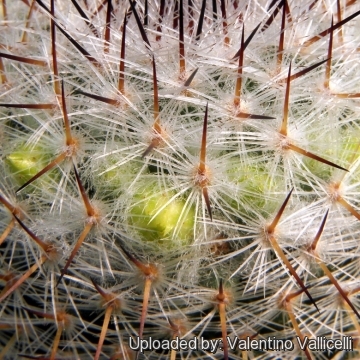 Neomammillaria halbingeri (Mammillaria halbingeri) Photo by: Valentino Vallicelli
Neomammillaria halbingeri (Mammillaria halbingeri) Photo by: Valentino Vallicelli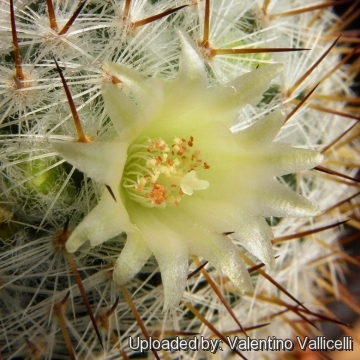 Neomammillaria halbingeri (Mammillaria halbingeri) Photo by: Valentino Vallicelli
Neomammillaria halbingeri (Mammillaria halbingeri) Photo by: Valentino VallicelliCultivation and Propagation: Mammillaria dixanthocentronSN|19098]]SN|19098]] subs. flavicentra is an easy-to-grow and easily flowering species, but not a fast grower. Some plants will offset, and moderately large-sized clumps can be produced in a few years.
Water regularly in summer, but do not over-water (rot prone). Use a pot with good drainage and a very porous potting media, and keep dry in winter. Feed with a high potassium fertilizer in summer. Avoid frost. Reputedly sensitive to low temperatures, but less so if kept on the dry side prior to, and during, cold weather. Outside full sun or afternoon shade, inside it needs bright light, and some direct sun. Bright light, encourages flowering and heavy wool and spine production.
Propagation: Direct sow after last frost, or division of larger plants.















